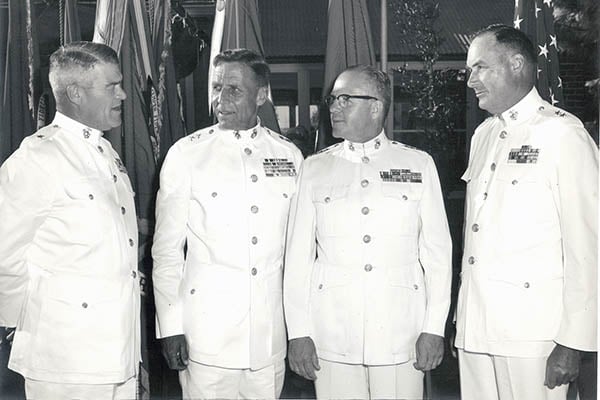
Last Updated on
You’ve probably never heard of the man that is one of the most important influences on modern sniping. Any good, long-standing program will have many important, influencing figures and won’t be the work of any one person. Most gun owners with a passing interest in long range rifle have heard of Gunnery Sergeant Carlos Hathcock, made famous as the subject of several books (One Shot, One Kill and Marine Sniper: 93 Confirmed Kills) and the influence of fictional characters such as Bob Lee Swagger in Stephen Hunter’s novels. Gun owners with more knowledge of sniper-specific history have likely heard of then-Captain Jim Land and the development of the Marine Scout Sniper program through Vietnam. So, who recruited and trained Hathcock and Land? How was the sniper program structuring before Vietnam?
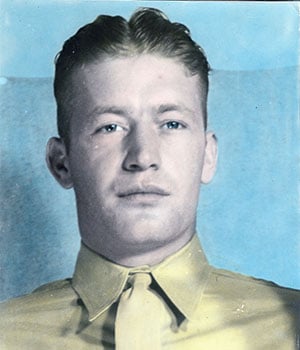
Before Formal Programs
Prior to founding formal sniper programs with an official school and doctrine, troops demonstrating a penchant for rifle marksmanship would be selected to engage specific targets at distance. In 1775, the Continental Army called for the formation of rifle companies, such as Morgan’s Riflemen led by General Daniel Morgan. Back then, rifles were exclusively sporting arms but men like Morgan realized the potential military value of individual marksmanship.
During the American Civil War, Sharpshooter Regiments were organized, such the 1st and 2nd United States Volunteer Sharpshooter Regiments commanded by General Hiram Berdan. While Berdan lacked previous military experience, he was a nationally-renowned competitive marksman and his Berdan’s Sharpshooters was one of the first U.S. military units with a marksmanship qualification standard. Potential recruits had to fire ten shots, reloading as fast as possible to engage a target at 200 yards from a rest and 100 yards offhand. Contestants missing a target or having a string of 50 or more (averaging five inches or more from target center) were disqualified. While a centered group just under five minutes of angle from a rest may not sound like much, consider this was done before rifles found widespread military adoption and that basic grouping standard for Marine and Army troops today is six MOA from a rest.
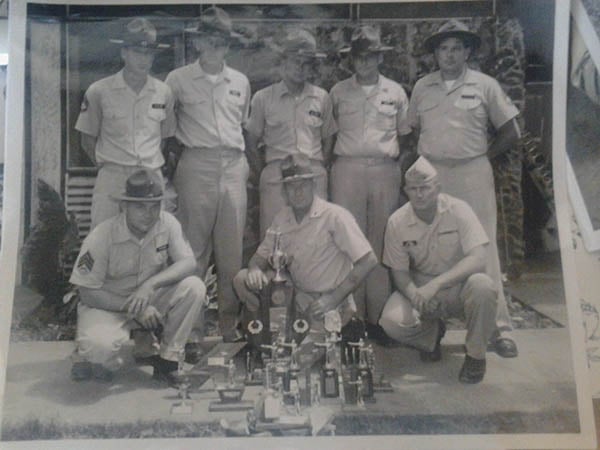
The common theme in these experiences is that sniping was not a taught skill. Instead, knowledgeable competition riflemen took known good shooters and sought to engage specific targets of opportunity with precision. By the end of the Korean War, savvy shooters began organizing sniper-specific doctrine. A prominent figure in this development was Chief Warrant Officer Arthur Terry.
Arthur Terry
Gunner Arthur Terry began his military service by enlisting during World War II. While serving at Wake Island, he was awarded the Bronze Star for actions taken during the island’s defense. While under intense fire from enemy ships Corporal Terry received a painful wound in the side but remained at his station. When his gun went out of action, without regard to his injured condition, he did his utmost to return his gun to action.
Then a veteran Marine stationed at the Navy Training Center in the range division, Terry told interviewers that after capture he was taken to a prison camp in China, transferred to several more in that country and finally wound up in north Japan. He said that he was liberated one month and one day after the War ended. “News of the war’s end was my greatest thrill,” he said.
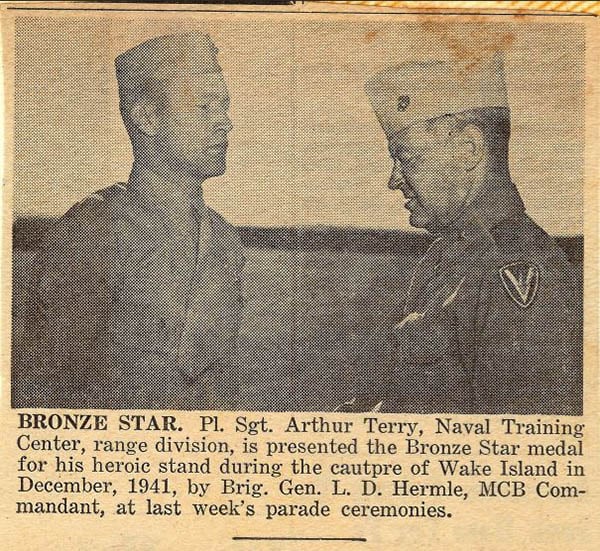
Following his Bronze Star earned during World War II, Terry served as a sniper in Korea. More accurately, he used his competition shooting experience with an accurized service rifle to engage specific targets. Upon returning to the States, he was assigned to Marine Corps Base Hawaii, running a shooting team and starting a formal sniping program in the 1950s. Terry had officially retired after Korea, however, Major General Alan Shapley, then-commanding general of the Fleet Marine Force, Pacific, “reacquired” him for a single purpose: Developing a sniper program, starting with the shooters from the Marine Rifle and Pistol team in Hawaii, known as the Scout-Sniper Program.
Scout-Sniper Birthplace
The Pu’uloa Range Training Facility, near ʻEwa Beach and Pearl Harbor, served as Gunner Terry’s test bed and birthplace of the Scout Sniper program. Previously, shooters assigned to a regular unit had been used for specific target removal on an ad hoc basis as the USMC did not have a sniper program. Marines received a few weeks of shooting skills training on the range but there wasn’t formal training beyond this. Gunner Terry handpicked a team, primarily from Marine Rifle and Pistol teams, though some were from regular units but had distinguished themselves at matches. If they passed muster for Gunner Terry, which was not a simple thing, they were put into his program.
This program was an all together new thing on a number of fronts, with a psychological focus, technical aspects, and scouting. Having been a competitor in pistol and rifle disciplines, Terry led a twenty man rifle team and fourteen man pistol team. Starting with their shooting program, the Hawaii Marines sought to put “meat” into the fledgling sniper course by teaching good shooting along with tactics.
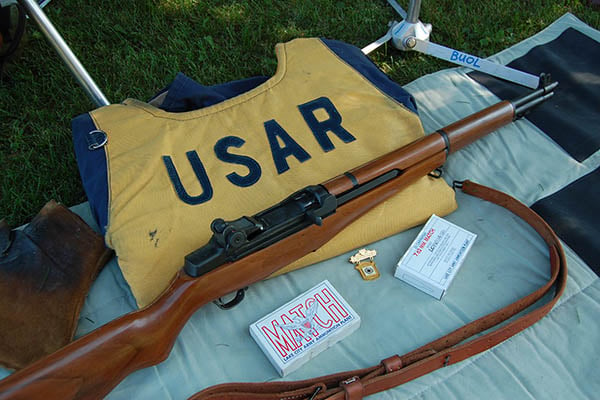
In 1964 the first USMC deployment to Vietnam included Hawaii-trained snipers. While many snipers in Vietnam worked alone, trial and error demonstrated that spotting and sniping was better done as a two man team, especially as snipers since that era lack the marksmanship and competition background prior to attending current courses.
While Gunner Arthur Terry had none of the fame or notoriety as others, he was the man that really made it happen. Equally good at shooting, coaching on the line, and recognizing the animal instincts needed for a good sniper, Terry was a true quiet professional. Despite his great personal skill and combat experience, he didn’t portray an ego nor was he cocky. He was the ideal grandfather to usher in the highly-renowned U.S. Marine Corps Scout Sniper Program.




Leave a Reply